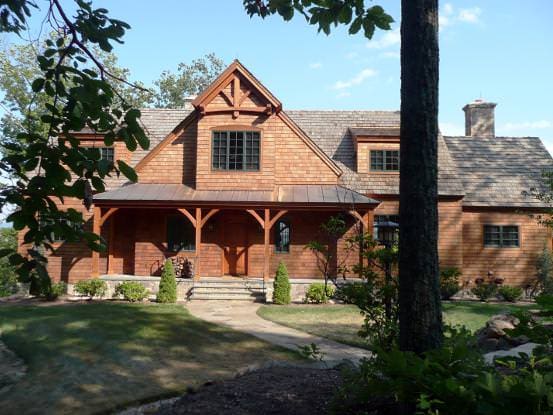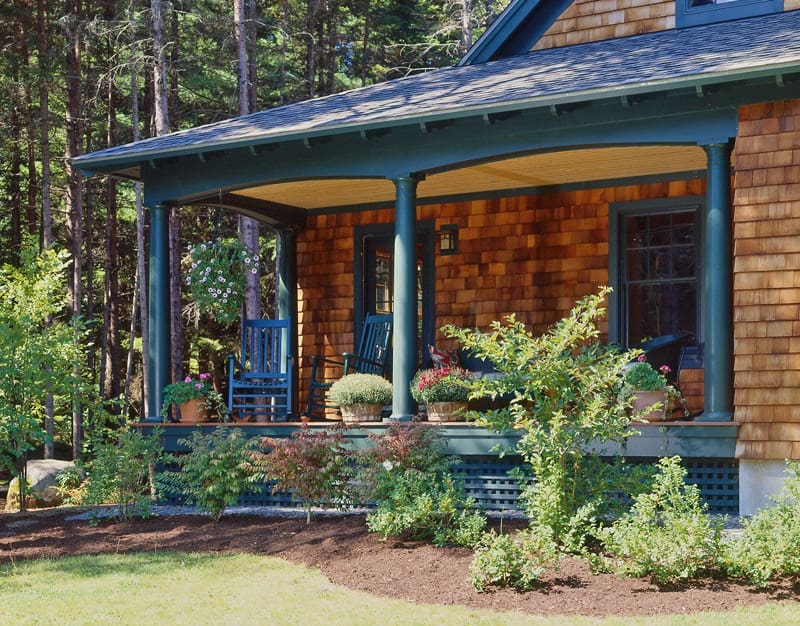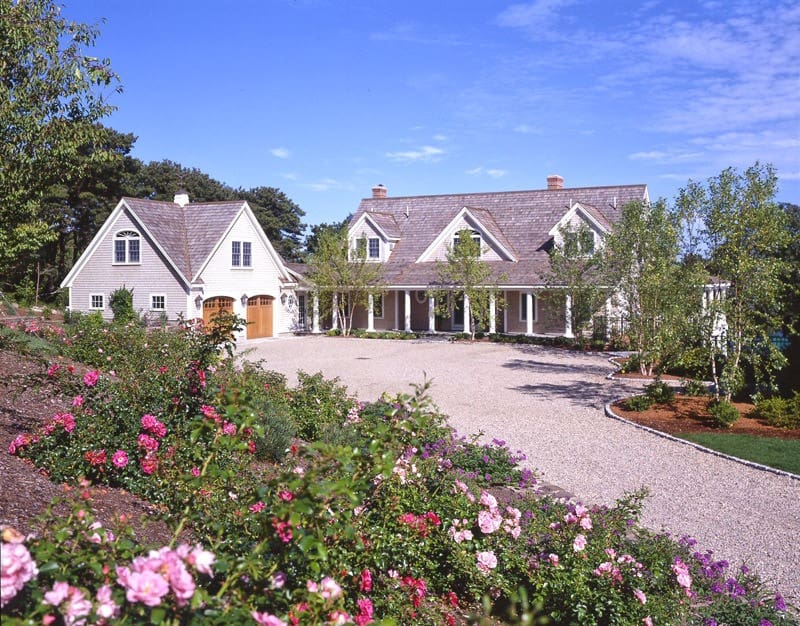There’s no doubt that a properly planned and skillfully executed landscape plan can make a new home feel at one with the land. The right landscape can serve as a lush and living setting for your gem of a home. One of the most unnatural sights is a newly constructed home with no landscaping at all. But, with proper planning you can ensure your new timber frame home is surrounded by lush landscape in no time. Here are our top five tips for getting the landscape for your new timber frame home off on the right foot.
1) Keep Mature Trees in Place

Timber frame home by Timberpeg Independent Representative Glenn Robertson of Smith & Robertson, Inc.
One of the benefits of building a timber frame home with Timberpeg is that we can work around mature trees on your land and keep them in place during construction. Keeping the best quality mature trees standing gives your landscape an unequaled head start.
2) Invest in Quality Shrubs
Shrubs should function to frame your home, never to block it. This home features some Euonymus alatus (aka burning bush) which grows slowly and provides wonderful fall color.
One of the longest lasting landscape choices you can make is installing quality shrubs. With their grand scale and year round above-ground structure, they are the backbone of a landscape. Some species of shrub will require little pruning and grow slowly and steadily through the years. Other shrubs can quickly become overgrown and require pruning multiple times during the year (such as honeysuckle). Some of our favorite shrubs include mock orange (Philadelphus), Hydrangea paniculata Grandiflora, and of course Lilac (Syringa) as it’s the state flower of New Hampshire.
3) Think About Maintenance
This home showcases various colors of rugosa roses which are native to coastal Japan and are resilient and low maintenance. They’re also quite lovely.
Roses may be lovely, but many varieties are susceptible to diseases like mildew and black spot and require yearly pruning. Some rose species, like rosa rugosa, a native species shown in the photo to the right, are disease resistant. Other plants can be favorite treats for insects, like oriental lilies which attract scarlet lily beetles. And if mildew and beetles weren’t enough, depending on where you live, deer and rabbits can also damage your landscape. All these factors should be considered when picking the right plants for your new home. A skilled landscape architect, or even a local nursery owner, can help you pick the best choices.
4) Local Is Often Best
Just as buying local ingredients provides superior freshness and taste, planting indigenous species has its own unique benefits. Local plants have adapted to the conditions of your region and therefore require little maintenance. There is also no risk of inadvertently spreading an invasive species into the wild. You can read more about choosing native plants here.
5) Start Out Easy
Cleome surrounds the pool of this beautiful guest home. It’s an annual that readily re-seeds itself and is a popular choice across the country.
When getting your landscape established, it’s normal for perennials and shrubs to take a few years to fill in and look mature. You don’t need to rush too much, because during the first year or two you can fill in some of the sparse spots with colorful annuals. Some annuals will even re-seed themselves and end up coming back the next year. We hope these tips and guidelines have got you thinking about what you’ll be putting in the garden of your new timber frame home. If you have any questions about the homes featured in this post, please don’t hesitate to contact Timberpeg.




